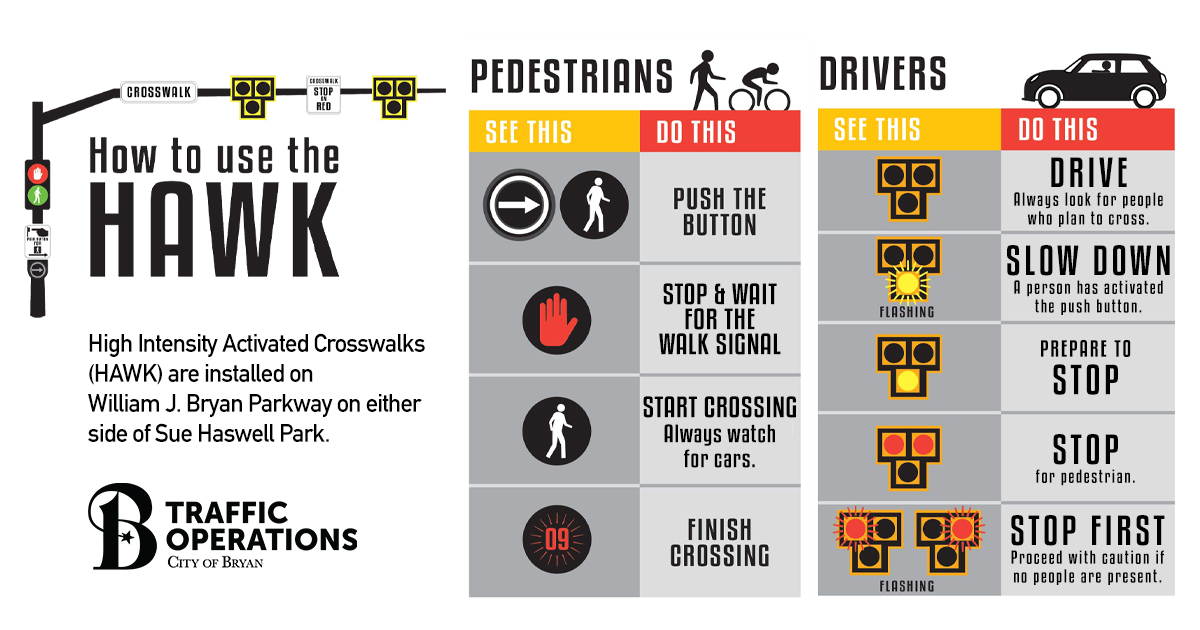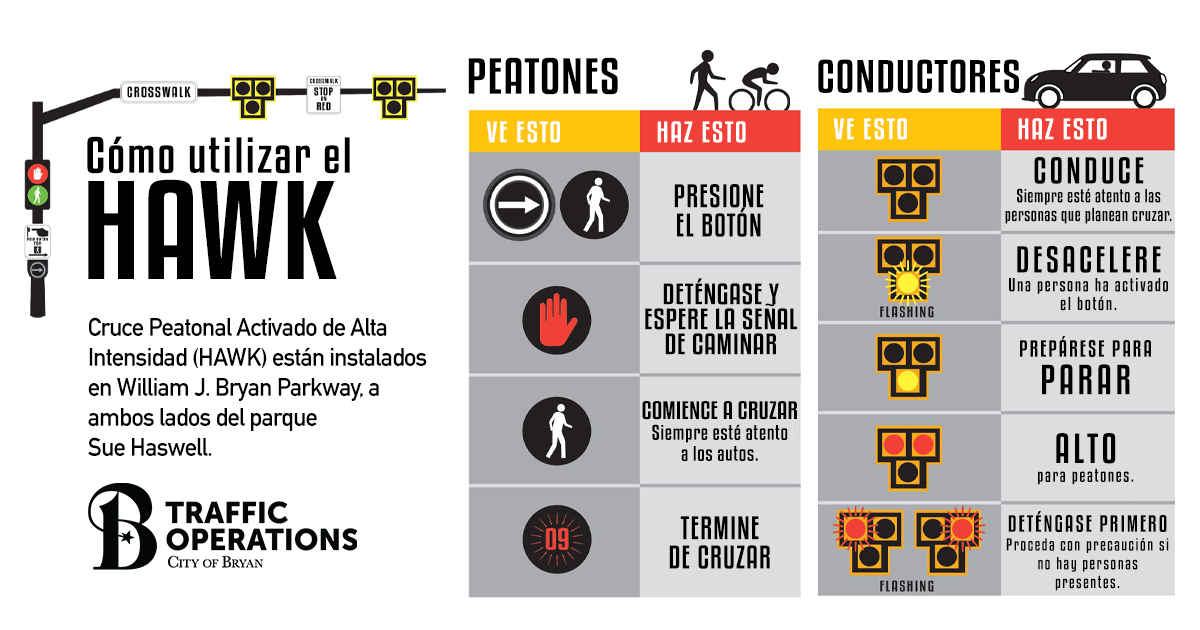
Behind the Gavel: Dec. 9, 2025
The Bryan City Council meets on Tuesday, Dec. 9, for their workshop and regular meetings at City Hall. Learn everything you need to know about the meeting here.
New pedestrian signals are in place on William J. Bryan Parkway, on both sides of Sue Haswell Memorial Park.
Called HAWK signals – short for High-Intensity Activated Crosswalk – they help make crossing the street safer by stopping traffic when a pedestrian presses the button to activate them.
This type of signal is used across the country, including in places like Houston and Austin, but these are the first to be installed in the Brazos Valley.
The signals will only turn on after they have been activated by a person wanting to cross William J. Bryan.
Here’s how drivers and pedestrians should use these lights, and what they’ll see.
Drivers should respond to steady yellow and red lights as they would at any traffic signal.
Pedestrians arriving at the intersection while the countdown timer is on should stop and push the button and wait for the next walk signal to appear.

Cruce Peatonal Activado de Alta Intensidad (HAWK) están instalados en William J. Bryan Parkway, a ambos lados del parque Sue Haswell.
Los conductores deben responder a las luces amarillas y rojas fijas como lo harían en cualquier semáforo.
Los peatones que lleguen a la intersección mientras el temporizador de cuenta regresiva esté activado deben detenerse, presionar el botón y esperar a que aparezca la siguiente señal para caminar.

When designing the William J. Bryan Parkway project, TxDOT and the City of Bryan considered safety and mobility for all users, including drivers, pedestrians and bicyclists. Pedestrians frequent the Sue Haswell Park area, particularly during special events. Additionally, during initial public feedback on the project, nearby residents indicated they wanted a safer way to cross the street to get to the park.
Two roundabouts are one of the key components of the William J. Bryan Parkway project. Roundabouts are proven to be a safer option than typical intersections by reducing potential crash points and preventing most of the two worst kinds of crashes: head-on and T-bone crashes. These roundabouts are intended to be driven at 20 mph or less and offer some traffic calming effect next to Sue Haswell Park where more pedestrians can be expected.
Want to know the proper way to drive a roundabout? Watch this video:
The contractor is still working through sidewalk pieces and landscaping along the corridor.